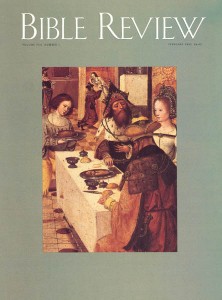The preceding article discusses historical events that may or may not be reflected in the fascinating book of Esther. The article that follows explores ways that traditional Jewish exegetes seek deeper and sometimes mystical meaning in the text. —Ed.
The book of Esther presents a special challenge because nowhere in ten chapters—look as hard as you will—does the name of God appear. Neither Yahweh, the personal name God, nor Elohim, the more generic name of God, can be found in the book. Nevertheless, Esther is a profoundly religious book.
Concealed in its chapters, rabbis and exegetes have discovered many signs of God’s presence. The signs take different forms: acrostics, hidden midrashim—elaborations on the meaning of the story buried within the text itself—and gematria, significant numerical values derived from adding together the individual numerical values assigned to each letter in the Hebrew alphabet.a
One piece of evidence offered for the presence of God in Esther is in the word makom, Hebrew for “place.” The word makom is often used in rabbinic literature to designate God.1
Already a library member? Log in here.
Institution user? Log in with your IP address.

